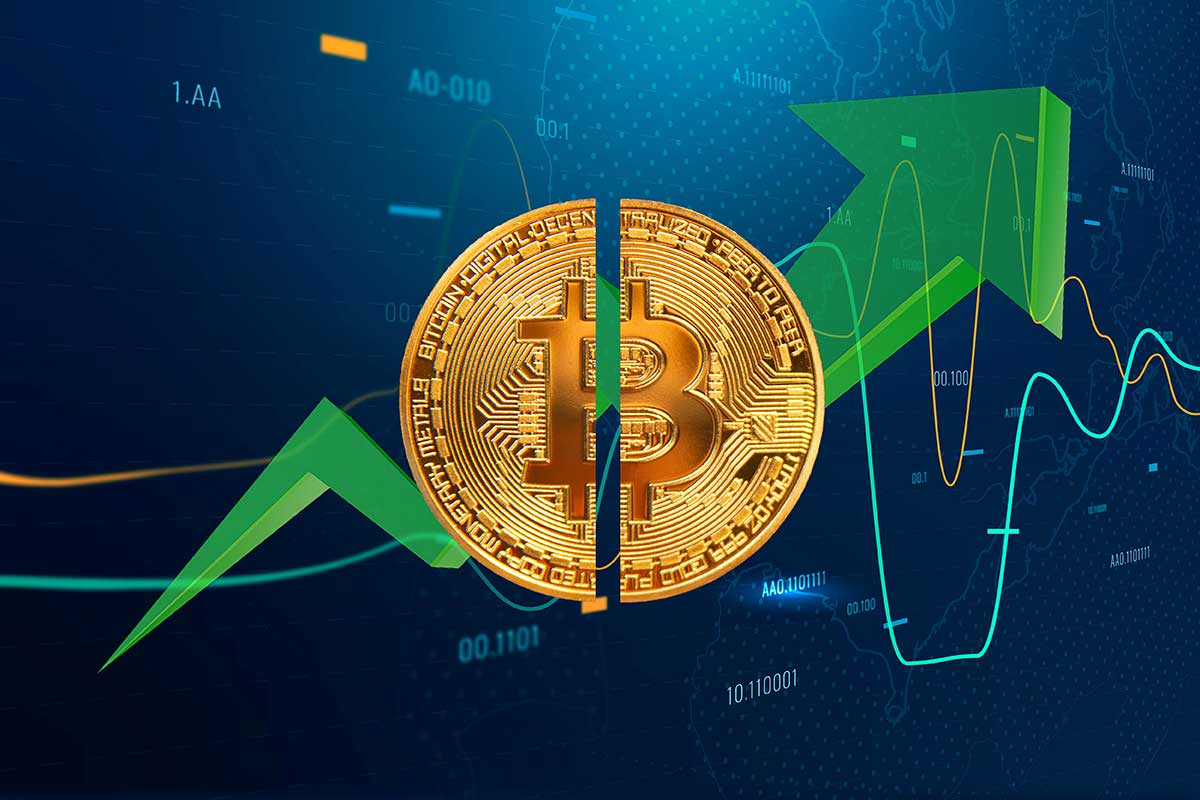Cryptocurrency vs Fiat Currency: Key Differences
We’re living in a time when money isn’t just paper bills or coins anymore - it’s apps, wallets, QR codes, and digital ledgers. As cryptocurrency moves from niche to mainstream, more people are asking: how does it really compare to the money we’ve always known?
The conversation around cryptocurrency vs fiat isn’t just technical - it’s about trust, control, access, and the very way we interact with value. From buying your morning coffee to sending funds across borders, both systems shape our financial lives in very different ways.
So, what sets them apart - and what might the future hold as both evolve side by side?
Cryptocurrency vs Fiat: Two Very Different Origins
At the heart of the cryptocurrency vs fiat currency debate is a simple truth: these are two fundamentally different systems of money.
Fiat money is what most of us use every day - government-issued currency like the dollar, euro, or yen. It’s backed by nothing physical, but by trust in a central authority, such as a government or central bank. When you see the words “Legal Tender” printed on a bill, that’s fiat in action. Its value comes from regulatory power, not intrinsic worth.
Cryptocurrency, on the other hand, doesn’t rely on central governments. It’s entirely digital, secured by code, and built on decentralized blockchain networks. It’s not printed, it’s mined or generated algorithmically - and most come with a limited supply that no single person or institution can alter.
The Most Widely Used Cryptocurrencies

While there are thousands of cryptocurrencies in existence today, only a handful have become widely adopted or recognised outside of niche communities.
Here are some of the most important and known ones:
- Bitcoin (BTC) was the first and remains the most valuable. It's often referred to as digital gold due to its limited supply and store-of-value appeal.
- Ethereum (ETH) powers a vast ecosystem of decentralised apps and smart contracts, making it the go-to platform for blockchain developers.
- Tether (USDT) and USD Coin (USDC) are popular stablecoins, pegged to the U.S. dollar and frequently used for trading or as a digital substitute for fiat in crypto markets.
- Binance Coin (BNB), Solana (SOL), and Ripple (XRP) are also widely traded and serve specific purposes within their respective platforms, such as lowering transaction fees or speeding up cross-border payments.
Each of these plays a slightly different role, but all contribute to the growing use and cryptocurrency adoption we’re seeing globally.
So, as you can see, the difference between crypto and fiat isn’t just technical - it’s ideological. Fiat is rooted in tradition and regulation. Crypto is born from innovation and decentralisation.
Who Controls the Money? Authority vs Algorithm

Once you look at how each system is managed, the contrast becomes even sharper.
When it comes to fiat, central banks have wide-reaching influence. They adjust money supply, interest rates, and borrowing costs to manage inflation and guide national economies. That control helps countries recover during downturns - but it also means the value of your money can shift based on policy decisions or political pressures.
Cryptocurrency doesn’t work like that. There’s no one steering the ship. Every rule - from how coins are issued to how transactions are verified - is enforced by software across a global network of users. Take Bitcoin: its issuance schedule and total cap are locked into code, not decided at a board meeting.
This structure means crypto is resistant to external interference - but it also lacks the safety nets of traditional finance. When markets shake, there’s no central body stepping in to stabilise things.
Ready to sell?
Are you ready to sell your currency? Stop waiting and request a Shipping Kit. We will provide everything you need to ship and receive funds for currencies you own.
Using It: Everyday Spending vs Emerging Tech
Fiat and crypto also differ in how we use them - especially in day-to-day transactions.
Fiat is accepted everywhere. You can pay your rent, grab groceries, or split a dinner bill with cash or a debit card. It’s the universal medium of exchange, backed by decades of trust, legal structure, and digital infrastructure via banks and financial institutions.
Crypto? It's growing, but it’s not there yet. While some retailers and online platforms now accept it, cryptocurrency transactions still aren’t the norm. Most often, crypto is held as a speculative asset or used for specific purposes like online investing or peer-to-peer transfers.
That said, crypto offers something fiat can’t: fast, borderless payments - often with lower transaction fees, especially across countries. You don’t need a bank account, just internet access and a wallet app. That’s a big deal for people in underbanked regions and one reason for rising cryptocurrency adoption worldwide.
Regulation, Risk, and the Trust Factor
When it comes to safety and oversight, fiat has the upper hand - for now.
Traditional currencies operate within established regulatory frameworks. There are protections in place if your account is hacked, your credit card is stolen, or a transaction goes wrong. The regulatory environment is clear, consistent, and backed by decades of legal precedent.
Cryptocurrency, on the other hand, is still navigating regulatory uncertainty. Some countries welcome it. Others restrict or ban it. Laws around cryptocurrency trading, taxation, and consumer protections vary widely - and that makes things tricky for users and businesses alike.
This grey zone can open the door to illicit activities like scams or money laundering, especially when paired with crypto’s pseudonymous nature. But as the market matures, global efforts to regulate crypto and integrate it into existing financial systems are gaining momentum.
Stability vs Volatility: Where’s the Risk?

Let’s be honest - price swings are one of the biggest reasons people hesitate with crypto. If you’ve ever checked the price of Bitcoin in the morning and seen a completely different number by lunch, you know what we’re talking about.
With fiat currencies, that kind of thing doesn’t really happen. Sure, inflation affects long-term purchasing power, and some countries occasionally face currency devaluation - but day-to-day? A $20 bill is going to buy you roughly the same coffee tomorrow as it does today. That kind of stability is no accident - it’s the result of decades of policy-making by central banks to keep things predictable.
Why Is Crypto So Volatile?
Crypto is a different beast. It’s fast-moving, heavily influenced by market sentiment, headlines, investor hype - or fear. A celebrity endorsement, a major hack, or a shift in cryptocurrency exchange policy can send prices soaring or tumbling.
For example, Bitcoin jumped over 40% in early 2024 after ETFs were approved in the U.S. - but it’s also seen drops of 10% in a single day after regulatory news from China or security breaches hit the news.
That’s why seasoned traders often love it. But for someone who just wants to pay for a service or hold value steadily, this kind of rollercoaster can be a real dealbreaker.
Still, it’s not one-size-fits-all. Some digital currencies are designed specifically to avoid wild swings. Stablecoins like USDC and USDT are pegged to the U.S. dollar, meaning 1 coin should always equal $1. These are often used for everyday financial transactions or international transfers - offering speed and low fees without the fear of losing value overnight.
Others - like Ethereum - serve a different role entirely, powering smart contracts and apps rather than acting as pure currency.
So yes, crypto can be volatile. But it’s also evolving. And depending on what you’re using it for, that risk might be manageable - or even avoidable.
Which One Fits Today’s World Better?
We’ve explored how cryptocurrency vs fiat differ in structure and use - but what does that mean in practice?
Fiat money still dominates everyday life. It’s reliable, regulated, and accepted everywhere from grocery stores to global markets.
Cryptocurrency, meanwhile, is gaining ground in areas where speed, privacy, or limited banking access matter. In some countries, it’s even a practical alternative when inflation or instability hits.
Rather than one replacing the other, we’re seeing both systems evolve. Central banks are testing digital currencies, while crypto developers are building safeguards once exclusive to fiat. It’s less a battle - more a convergence.
Here’s a quick comparison to bring it all into focus:
| Fiat Money | Criptocurrency | |
|---|---|---|
| Backed by | Government and central bank trust (Legal Tender) | Code, community consensus, and blockchain technology |
| Control | Centralised (central authority, monetary policy) |
Decentralised (decentralized blockchain networks) |
| Supply | Flexible—can be increased or decreased | Often capped or algorithmic (limited supply) |
| Form | Physical or digital | Fully digital (digital currencies, digital assets) |
| Usage | Universally accepted for payments, taxes, wages | Growing use; accepted on some platforms, apps |
| Transaction Speed | Varies depending on the system (can be slow) | Fast, especially for cross-border transactions |
| Security | Protected by laws, institutions, and bank insurance | Secured by cryptography, but user-managed |
| Fees | Often involves intermediaries and transaction fees | Lower fees (in many cases), especially globally |
| Stability | Generally stable, managed by central banks | Highly volatile, depending on market activity |
| Legal Recognition | Recognised by law in all countries | Legal status varies (regulatory uncertainty) |
| Use in Illicit Activities | Regulated and monitored to prevent misuse | Sometimes misused (money laundering, scams) |
The Currency Landscape Is Changing
At the end of the day, it’s not about which one is better - it’s about knowing how both cryptocurrency and fiat fit into the way we use and think about money.
Fiat money is familiar, stable, and trusted. It’s what we’ve grown up using, and it still powers almost everything from paychecks to everyday purchases. But crypto is bringing new ideas to the table. It’s faster, more flexible, and gives people more control - especially in places where traditional banking doesn’t always work well.
We’re not looking at a future where one replaces the other. Instead, we’re seeing both systems grow, shift, and start to overlap. The more you understand about how they work, the easier it is to make smart choices - whether you’re spending, saving, or just staying informed.
Ready to buy?
Are you ready to buy your currency? Stop waiting and request a Shipping Kit. We will provide everything you need to ship and receive funds for currencies you own.


